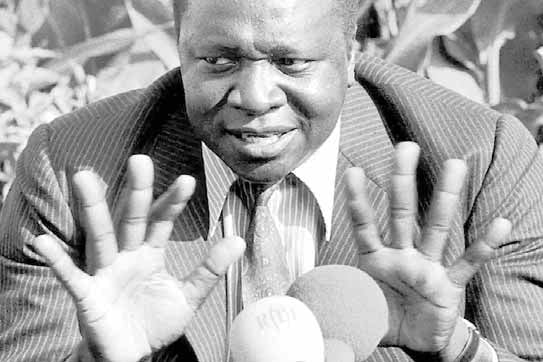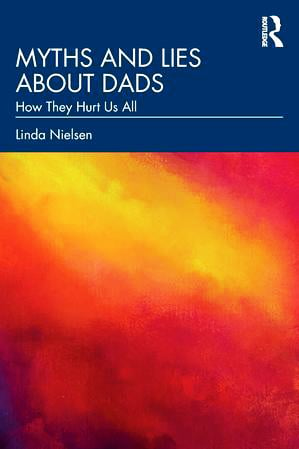Prime
Book weighs Obugabeship beauty, Amin’s bloodletting

What you need to know:
- Book title: Bridging the Gap: Struggling Against Sectarianism & Violence in Ankole and Uganda
- Author: James Kahigiriza
- Price: Shs10,000
- Where: Fountain Publishers Bookshop.
- Pages: 84
When Mr James Kahigiriza started work as Enganzi (Prime Minister) of Nkore Kingdom in 1963, he found the Eishengyero (Royal Council or Parliament) bitterly divided.
The Eishengyero comprised a motley of elected representatives and county chiefs as ex-officio members. The elected representatives were avowedly partisan while the county chiefs were ostensibly non-partisan, at least officially.
However, the House was divided against itself as the Bahima and the Roman Catholic Bairu county chiefs sat on Democratic Party (DP) benches opposite the government benches. On the government benches, the
Protestant Bairu threw in with the ruling Uganda Peoples’ Congress (UPC).
Because the County Chiefs were civil servants, not politicians, there was no reason for them to sit on the opposing political benches. But they ignored this. In this context, the House was highly polarised. Still, Kahigiriza, as head of government and chairperson of the Eishengyero, put his foot down. He ordered the County Chiefs, as ex-officio members of the Eishengyero, to take their seats behind government benches. His order was obeyed. And everyone was put on notice that there was a new Sheriff in town and he would determinedly pursue a course leading to his collision against the Bairu versus Bahima and Protestant versus Roman Catholics dichotomies in Nkore administration. In this way, the new Enganzi was seen as a bridge between sectarian divides.
In his book, “Bridging the Gap: Struggling Against Sectarianism & Violence in Ankole and Uganda,” Kahigiriza explains how Nkore society has long doubled as a battleground of religious and communal sectarianism.
In the 1950s, the Bairu versus Bahima and Roman Catholic versus Protestant rivalries were fevered by the formalisation of political parties refl ecting cleavages of region and religion. These divisions and dissensions
were deepened by the violent upheavals and fratricidal showdowns that characterised the politics of the mid 1960s, 1970s and early 1980s.
In this rather slender book, Kahigiriza describes his struggle against sectarianism and violence in Ankole. He also explains how he tried to bridge the gap between rival communities by containing the antagonisms of extremism when he was the Enganzi of Ankole from 1963 to 1967.
In doing so, he consistently walked the line between his own personal safety and dangerously patriotic views. As a consequence, something had to give and he soon became a victim of state-inspired violence in the ‘70s and ‘80s, almost losing his life a number of times. Under President Idi Amin, he was appointed Chairman of the Uganda Land
Commission and, before long, he was arrested. At the State Research Bureau, Nakasero, he found himself in jail living cheek to jowl with other inmates, several of whom were top flight Ugandan officials who had run afoul of Amin’s murderous regime.
“The following day in the afternoon we heard people being pushed down the staircase at a terrifi c speed. These people turned out to be Erinayo Oryema, the Minister of Lands, Survey and Water Resources and Oboth Oryema, the Minister of Finance.
Oryema had been the Inspector General of Police, before he was appointed a minister by Amin aft er the coup of 1971. He was subsequently promoted to the rank of Lt Colonel. Before he entered the corridor, his pips were forcefully removed.
Poor Ofumbi was left in underpants. I was terribly shocked to see my Minister Oryema, whom I thought would plead for me. I helped to zip his trousers with my handcuffed hands, and he sat in front of me. Both ministers were also
handcuff ed,” writes Kahigiriza. As the clock ticked inexorably towards their shared hour of doom, another high profi le
figure was brought in. This was Archbishop Janani Luwum, the then nominal head of the Church of Uganda. At this point, the young jailers began to humiliate Luwum. He was verbally abused and mocked in a manner aimed to strip him of his dignity. However, according to the author, Luwum’s dignifi ed bearing never changed.
He was then slapped “hard in the face, so much so that his false teeth fell on the ground,” writes the author.
Immediately, the terror the author portrays strikes the reader as familiar. For it reads like a few pages from Dante Alighieri’s work Inferno, possibly the scariest and clearest literary depiction of what Hell might be.
In the work translated by Henry Francis Cary, the words at the entrance of Dante’s Hell terrifyingly read: “all hope abandon ye who enter here.”
The author’s brief description of the murder of the Director of the National Theatre, Byron Kawadwa, is also chilling. Later, aft er the fall of Amin, the author slowly returns to the groove of a normal life and tells of his mission to revive Nkore’s cultural heritage through the restoration of the Obugabe (King). In the process, he disabuses the reader of the many myths surrounding the Obugabeship. This segment, as with most of the book, makes for an enlightening read indeed.




